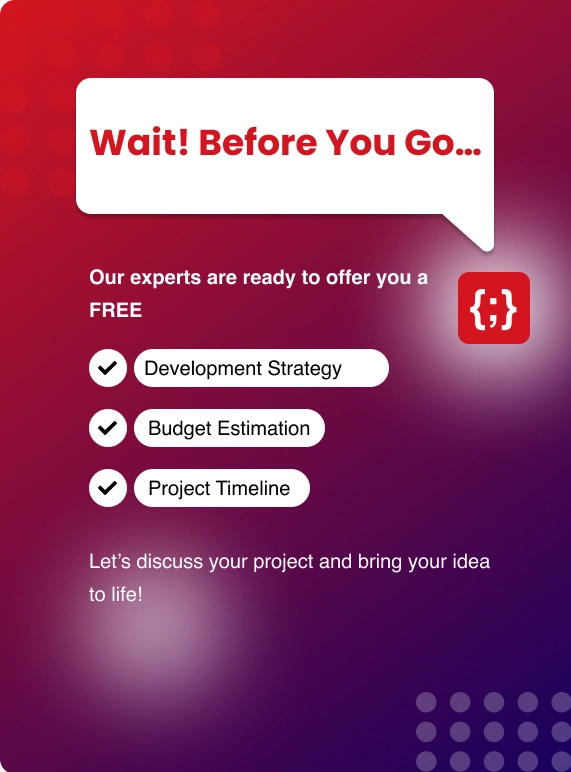With the advent of a mobile phone and strong internet connectivity, mobile phone usage has increased tremendously. Accordint to statista the global number of smartphone users in was forecast to continuously increase between 2024 and 2029 by in total 1.7 billion users (+37.98 percent). After the fifteenth consecutive increasing year, the smartphone user base is estimated to reach 6.2 billion users and therefore a new peak in 2029. This shows how mobile phone usage is increasing exponentially.
With the usage of mobile phones, more and more apps are being developed and designed for various purposes. This gives businesses insight into an increased requirement for mobile apps. These apps include the navigation app, social media apps, chatting apps, reading apps, productivity apps, and so many others.
Therefore it has become necessary for businesses to heavily invest and focus on mobile app design guidelines. A mobile app UX design guideline includes everything on which user interaction is based. For instance, a mobile app design includes co lor combination, app layout, and design, UI/UX design, registration, and input forms, fonts, and more. According to Steve Jobs, “Design is not just what it looks like or feels like, design is how it works.”
If your business is into mobile app development and designing, then it is necessary that the apps thus developed provide excellent user experience and stunning design. These may help you develop and understand how to design a mobile app that is an instant hit:
1. Define Your App:
A user decides to download your mobile app from the app store. As he launches the mobile app after installation, present screens that explain the features and functionality of your mobile app. Also, explain with the screens, how to use the app.
You can design a maximum of four or five screens to explain the app to the users. Make sure the explanation is short and to the point with images used for explanation.
2. Load the App Quickly:
Users hate the mobile apps that take forever to open and load. A little more delay in opening the app and the user may abandon your app. With fast mobile hardware and increased strength of internet networks, users have turned impatient.
They want everything to happen immediately and quickly. Make sure that your mobile app has measures to keep the loading times in check. According to Google’s PageSpeed Insight, the app that loads within one second is a gold standard.
3. Keep the Registration Process Simple and Quick:
As the app loads, it asks the user to register himself. Registration aims to provide the user an experience of a customized app. You can ask for the registration details of the user as soon as the app opens up. But this may lead to distraction and an uncomfortable user.
You May Also Read: Cross-Platform App Development with React Native
Keep this step skippable. Give the user a choice to register later. A user downloaded the app to browse, look at something, book, or buy something. Let him do that if he wants to skip the registration process. Once a user reaches a point, gently remind him of the registration process.
4. Minimize the User Input:
A mobile screen can be a very difficult thing to use when it comes to user input. If your user has crossed a certain age limit, then it becomes difficult for him to feed information through a mobile keyboard.
Therefore, a successful mobile app UI/UX design involves an interface where minimum user input is required. Ask for only essential pieces of information. It is a good practice to autofill up certain details from the app store, for instance, the user’s email address. Use dropdown menus or buttons wherever possible.
5. Bring Down the Cognitive Load:
Some apps ask too many questions or include a lot of text for a user to read. This is not an example of a good mobile UI/UX design. These things increase the cognitive load on the user. Keep a minimum number of screens to educate the user but too many of them can make your app lose its purpose.
Include intuitive images and graphics instead of text so that even a child can understand the navigation of your app.
6. Maintain the Consistency of the Ui & the Website:
This is an important principle to consider if your users have been using the website and now you are launching a mobile app. You should maintain the consistency levels on the app as you had with your website. Your users must be accustomed to the look and feel of your website.
Hence, while designing the mobile app, an example of good practice is to have a similar UI/UX design of your mobile app. Experts call a mobile app, an extension of your website. Hence, make sure that the user experience is similar for the users on both platforms.
7. Easy Navigation:
Navigation is the most important thing as far as a mobile app is concerned. We all have encountered apps that exhibit difficult or unusual navigation. Sometimes, pressing a button throws you out of the app. This happens when the app is poorly designed and UI/UX design is not taken into consideration.
Always make sure that the back button and other navigation buttons are visible and accessible. A user may feel lost in the absence of a back button or other navigation buttons. A good design enables a user to navigate back, and change the input details or take up another option and proceed.
It is important to place the navigational buttons at the same place on all the screens. This way, users can find them at the same location on all the app screens.
8. Define the Correct Size for Interactive Elements:
Interactive elements allow a user to interact with your app. A mobile screen is a very small place for user interaction. Hence, make sure your app provides an interactive interface along with the correctly sized UI elements.
A user generally uses his thumb to interact with the app screen. Make sure that the user does not have to reach too far to use a UI element. Find out the thumb zone and place the elements within that space as far as possible.
9. Typography and Readability:
The font size and style of the text, that you use to display instructions or error messages define the typography. Use fonts that are clear and easy to read. Consider optimal line spacing, paragraph formation, and indentation.
It is always a good practice to use minimal text but whatever text you display, make sure that the text is readable and the user can scan it in one glance.
10. Include in-app Search:
We all are used to searching for something using a search box and a search query. A mobile app UI design with an in-app search should also present the same context. Make sure that the user can search for something using an in-app search.
Also, you should take care that the search when performed, should not redirect to a website. It should offer results within the app.
Read More: Native vs Hybrid vs Web Apps - Which Mobile App Development is better for Businesses?
Conclusion
A nicely designed UI/UX design of a mobile app is a perfect blend between a beautiful interface and functionality. A business that heavily deals with mobile app development and design, should keep these basic aspects under consideration to develop apps with a focus on user experience.
You can also use a mobile app design template to define certain aspects of your mobile app for an optimized user experience. A seamless transition, easy navigation, and intuitive user interface is the key to a best mobile app design.
Frequently Asked Questions
Qus. Which is the best mobile app design tool or software?
Choosing the best mobile app design software depends on your needs and experience level.Popular options include:
- Adobe XD: A versatile tool for designing user interfaces and prototyping.
- Figma: A cloud-based platform for collaborative design and prototyping.
- Sketch: A macOS-specific app with a focus on vector graphics and UI design.
- InVision: A prototyping and collaboration tool with a strong focus on user testing.
Qus. Where can I find mobile app design templates?
You can find free and premium mobile app design templates on websites like:- UI8: Offers a wide range of templates for various app types.
- Dribbble: A popular platform for showcasing design work, including app templates.
- TemplateMonster: Provides a large collection of pre-designed app templates.
Qus. How to create a mobile app?
To create a mobile app, you'll need to:- Plan your app: Define its purpose, target audience, and key features.
- Design the UI/UX: Create wireframes, mockups, and prototypes.
- Develop the app: Write the code using a programming language like Swift (iOS) or Kotlin (Android).
- Test the app: Thoroughly test on different devices and platforms.
- Publish the app: Submit it to app stores like the Apple App Store or Google Play Store.
Qus. Where is the best place to design apps?
The best place to design apps is often a quiet, distraction-free environment. Consider using a dedicated workspace or a co-working space.Qus. Is there any free mobile app design tool?
There are several free design app tools available, including:- Canva: A user-friendly tool for creating graphics, including app designs.
- GIMP: A free and open-source image editor with advanced features.
- Figma (free plan): Offers a basic version with limited features.











.webp?lang=en-US&ext=.webp)

.webp?lang=en-US&ext=.webp)

